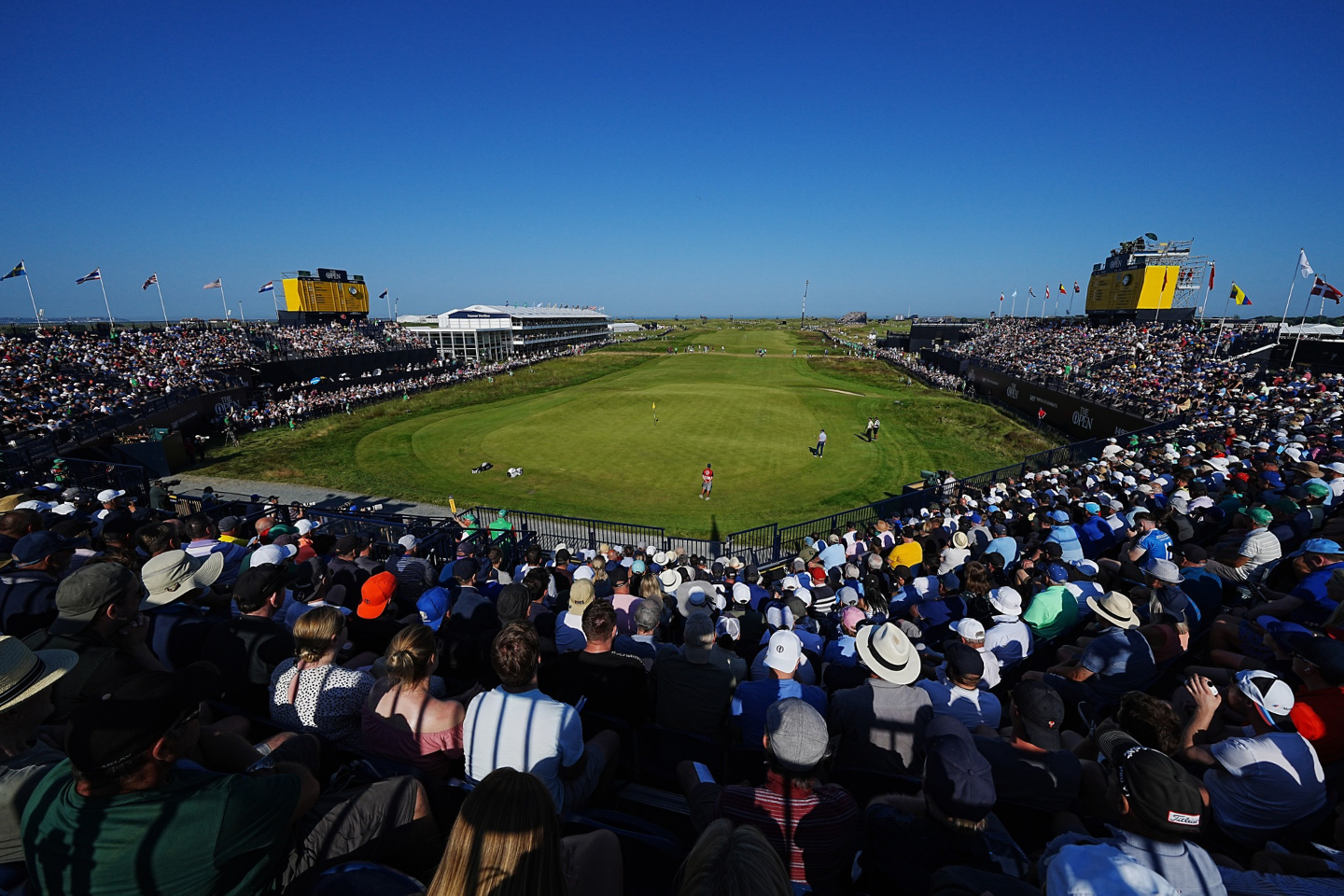
It was a spectacle it was for the 290,000 fans (All photos: The Open)
For all its ancient history, medieval castle and Old Course idiosyncrasies, St Andrews in Scotland doesn’t do fairy tales. Hoping Tiger Woods would make it a hat-trick of wins at the 150th Open was always a fantasy given his fragile physical state. A more realistic wish for home fans was that Northern Ireland’s Rory McIlroy might end his major drought. He came close but the inevitability of his missed putts evoked comparison with England’s missed penalties in crucial football matches.
The final, wishful thought for traditionalists everywhere was that no LIV Golf rebel would lift the Claret Jug. None did, although when asked minutes after becoming champion, Australia’s Cameron Smith refused to rule out joining the rebellion. For many, it was a sour postscript to one of the great Open rounds, but talk of the split in the game had never been far from the putting surface.
Yup, it could have been a lot better for what might be called “loyalist” golf fans. But it was still a great occasion with an epic final day. Australia has a new sporting hero — a dinky-di Queenslander who sports a mullet and spoke of drinking “20 Claret Jugs of beer” to celebrate. Peace, however, didn’t make it through the press conference.
cameron_smth_claret_jug1.jpg

After Smith’s ambivalence came rumours that Henrik Stenson, Europe’s Ryder Cup captain no less, would be jumping ship (At press time, the confirmation looked likely). Japan’s 2021 US Masters champion and national hero, Hideki Matsuyama, was whispered to be next in a whopping US$300 million deal. Then we knew that the Open had merely been keeping a lid on what the BBC called “golf’s pressure cooker”.
But what a spectacle it was for the 290,000 fans. Under the global spotlight and in glorious weather, the Auld Grey Toon had never looked so spick and span, the fabled course so cool. With the first and 18th holes squeezed between the streets and the North Sea, and the rest a pockmarked, lunar-like wasteland whose only use might be as a bombing range, it maintained its reputation as the quirkiest of major courses.
While it withstood the big hitters like Bryson DeChambeau, who tied for eighth place, its biggest weaknesses were the shared greens that caused some rounds to take an unacceptable six hours!
But as you’d expect of a course that dates from 1552, it’s nothing if not quaint. It boasts a rojak of features whose names range from the Elysian Fields to Hell Bunker, Miss Grainger’s Bosoms to Old Railway Sheds, among which is the most famous golf hazard of all. And it was the infamous Road Hole bunker that offered the final hope for McIlroy — if it could force Smith into a wrong turning.
the_open_rolex.jpg

Playing one hole ahead of the 33-year-old, the fast-charging Aussie had caught up with and passed the joint overnight leader with a birdie blitz. But Smith had landed his approach on the 17th 30ft short with the dreaded bunker smack between his ball and the green.
Looking like it was built by vindictive bricklayers, its “walls” have made strong men weep. Dubbed the Sands of Nakajima in honour of Japan’s Tommy Nakajima, who took four to get out in 1978, it ensnared American David Duval for just as long before he lost to Tiger in 2000.
But Smith wasn’t in the bunker — it just loomed in front of him like the mouth of a volcano. With nerves of titanium, he took out his flat stick and steered his putt around the crater rim and onto the green. It left him with a 12-footer, which he holed. A birdie on the 18th clinched the US$2.5 million first prize when McIlroy, who two-putted every green, missed another chance at the last.
And so his major drought will go into an eighth year, after he joined Woods and Jack Nicklaus as the only players to have won four by the age of 25. Already 28, Smith has left membership of that exclusive club too late but has the talent and temperament to do some serious catching up.
Whether he gets to play them is another matter. If he joins LIV, it could be a pivotal moment in the battle between the establishment and the Saudi-funded mercenaries. With no major for eight months, the landscape of professional golf could be unrecognisable by the time the Masters tees off next April.
tiger_salute.jpg

There is also a huge question mark about the future of Tiger. He played in three of the four majors this year, but only in the Masters did he complete four rounds. At the USPGA, he made the cut but withdrew after three, complaining his body simply couldn’t take it anymore. He then skipped the US Open to be ready for his beloved St Andrews but still missed the cut.
Given the trouble he has to go through to prepare himself to even swing the club, we can’t expect any more miracles like the Masters win in 2019. Asked if playing more often would make him more battle-hardened, Woods said: “People have no idea what I have to go through and the hours of the work on the body, pre- and post-[round], each and every single day to do what I just did. That’s what people don’t understand — they don’t see. And then you think about playing more events on top of that, it’s hard enough just to do what I did.”
It was a sad and tearful end as he received his ovation on the 18th. He doubts if he’ll play here again as he’ll be 51 the next time the Open comes to St Andrews. He says he won’t become a ceremonial golfer but just what kind of golfer will he be? Just what kind of golfers will the rest be? And what kind of game will they be playing?
These are the questions that may not even be answered by the time Augusta’s azaleas come into bloom.
This article first appeared on July 25, 2022 in The Edge Malaysia.


